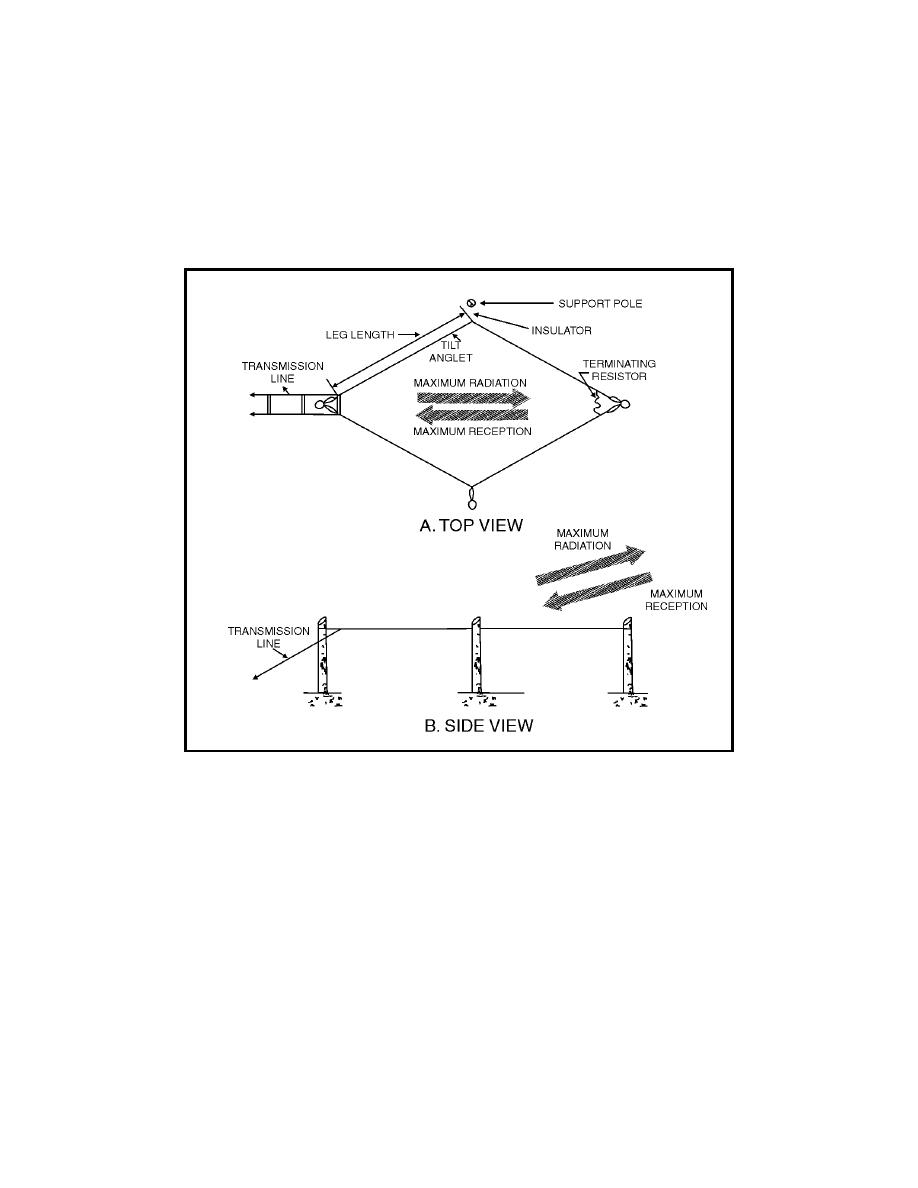
TC 9-64 _________________________________________________________________________
terminated by a noninductive resistor to produce a unidirectional pattern. A
rhombic antenna can be made of two obtuse-angle V antennas that are placed
side by side, erected in a horizontal plane, and terminated so the antenna is
nonresonant and unidirectional. The rhombic antenna is widely used for long-
distance, high-frequency transmission and reception. It is one of the most
popular fixed-station antennas because it is very useful in point-to-point
Figure 4-38. Basic Rhombic Antenna
4-165. Advantages. The rhombic antenna is useful over a wide frequency
range. Although some changes in gain, directivity, and characteristic
small enough to be ignored.
4-166. The rhombic antenna is much easier to construct and maintain than
other antennas of comparable gain and directivity. Only four supporting poles
of common heights from 15 to 20 meters are needed for the antenna.
4-167. The rhombic antenna also has the advantage of being noncritical as
far as operation and adjustment are concerned. This is because of the broad
frequency characteristics of the antenna.
4-168. Still another advantage is that the voltages present on the antenna
are much lower than those produced by the same input power on a resonant
4-50



 Previous Page
Previous Page
